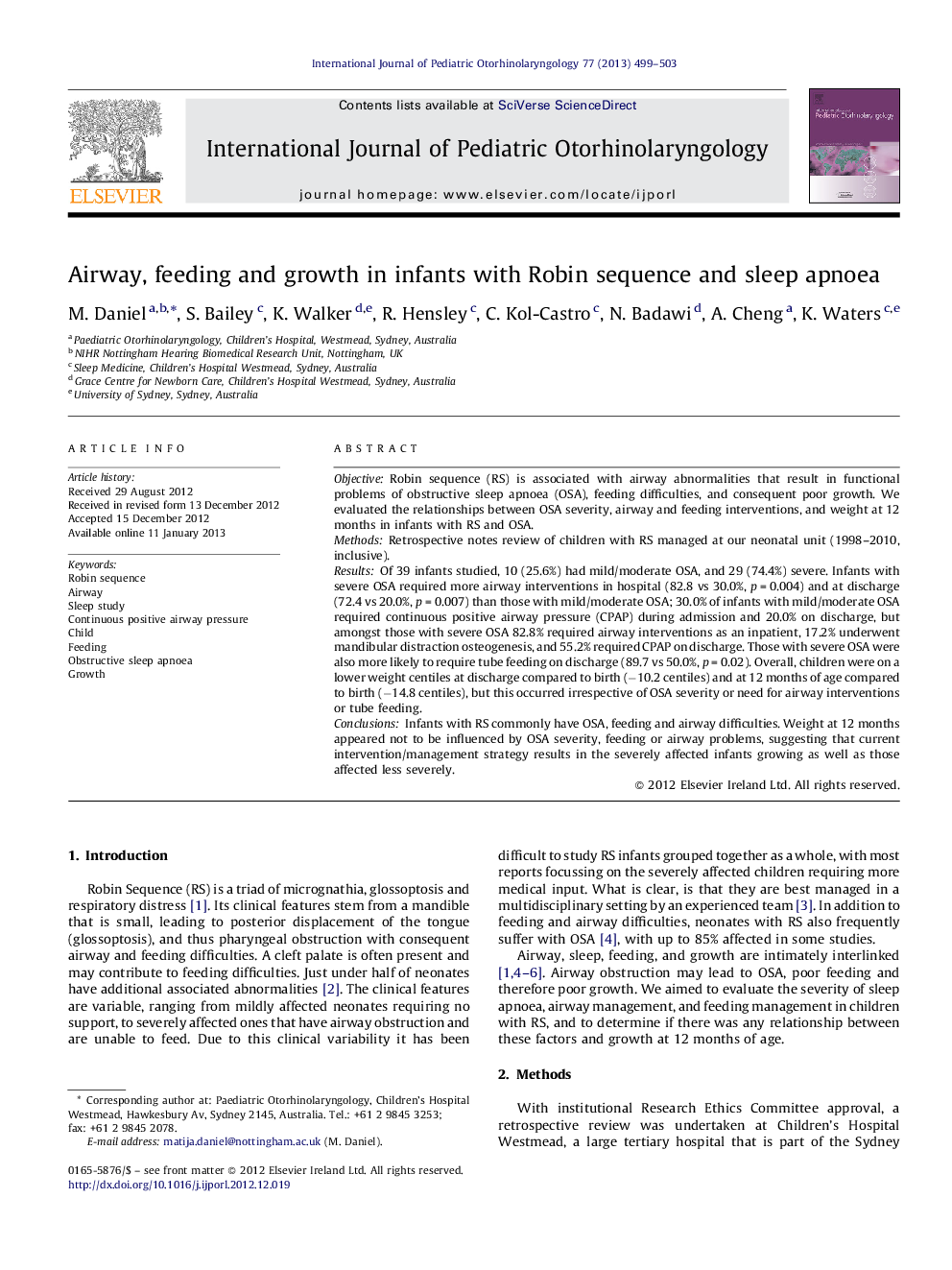| Article ID | Journal | Published Year | Pages | File Type |
|---|---|---|---|---|
| 6213887 | International Journal of Pediatric Otorhinolaryngology | 2013 | 5 Pages |
ObjectiveRobin sequence (RS) is associated with airway abnormalities that result in functional problems of obstructive sleep apnoea (OSA), feeding difficulties, and consequent poor growth. We evaluated the relationships between OSA severity, airway and feeding interventions, and weight at 12 months in infants with RS and OSA.MethodsRetrospective notes review of children with RS managed at our neonatal unit (1998-2010, inclusive).ResultsOf 39 infants studied, 10 (25.6%) had mild/moderate OSA, and 29 (74.4%) severe. Infants with severe OSA required more airway interventions in hospital (82.8 vs 30.0%, p = 0.004) and at discharge (72.4 vs 20.0%, p = 0.007) than those with mild/moderate OSA; 30.0% of infants with mild/moderate OSA required continuous positive airway pressure (CPAP) during admission and 20.0% on discharge, but amongst those with severe OSA 82.8% required airway interventions as an inpatient, 17.2% underwent mandibular distraction osteogenesis, and 55.2% required CPAP on discharge. Those with severe OSA were also more likely to require tube feeding on discharge (89.7 vs 50.0%, p = 0.02). Overall, children were on a lower weight centiles at discharge compared to birth (â10.2 centiles) and at 12 months of age compared to birth (â14.8 centiles), but this occurred irrespective of OSA severity or need for airway interventions or tube feeding.ConclusionsInfants with RS commonly have OSA, feeding and airway difficulties. Weight at 12 months appeared not to be influenced by OSA severity, feeding or airway problems, suggesting that current intervention/management strategy results in the severely affected infants growing as well as those affected less severely.
